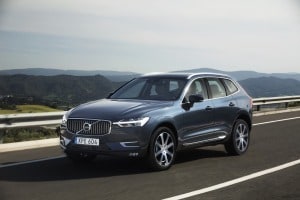Drive by Numbers - Psychology of Silver
 Like millions of other people around the globe, I was absolutely glued to the Summer Olympics coverage in London. I don't know what it was about these particular Games, but I watched more diligently than I ever had in the past. And now that the torch has been extinguished and we have four years until Rio, I find myself dealing with a bit of post-Olympic depression. To battle this, I have been consuming all things Olympic related and in my readings came across an interesting NPR article which confirmed something that nagged me the entire time I watched the Olympics. That is, why does the silver medalist always seem so dejected while the bronze medalist looks elated? If you watched the Games, you know what I am talking about. There are numerous examples — divers Tom Daley and Qiu Bo, Lashinda Demus in the 400M hurdles, and Mckayla Maroney whose silver medal disappointment has become an Internet sensation. And for the record, she's not impressed by the NPR article.
Like millions of other people around the globe, I was absolutely glued to the Summer Olympics coverage in London. I don't know what it was about these particular Games, but I watched more diligently than I ever had in the past. And now that the torch has been extinguished and we have four years until Rio, I find myself dealing with a bit of post-Olympic depression. To battle this, I have been consuming all things Olympic related and in my readings came across an interesting NPR article which confirmed something that nagged me the entire time I watched the Olympics. That is, why does the silver medalist always seem so dejected while the bronze medalist looks elated? If you watched the Games, you know what I am talking about. There are numerous examples — divers Tom Daley and Qiu Bo, Lashinda Demus in the 400M hurdles, and Mckayla Maroney whose silver medal disappointment has become an Internet sensation. And for the record, she's not impressed by the NPR article.
In my world of data analysis, it seems like the adage "one man's trash is another man's treasure" can apply. While silver symbolizes a crushing blow to many a world-class athlete, it has been the champion color of the automotive industry for the past decade. Color is becoming more diversified of late, but for a long period of time, silver was the de facto car color for everything from traditional brochures to auto shows. Sure, silver is an easy color to photograph, but people have to like it, right?
And people liked it. Silver has been the No. 1 color for retail consumers for the past decade, and nothing speaks to success louder than the consumer wallet.

Although cooling in popularity but still on the medal stand, silver will be known as the defining car color of the first decade of this millennium. There were even some months in which silver cars made up over 20 percent of all new car sales. So, this got me thinking. Culturally speaking, silver represents being second best or, more pessimistically, being the first loser. So then why is it the color of choice for so many people for their car, which is arguably an extension of one's own personality? And if car buying is an emotional process why would we want to be represented by something less than the best?

Chaffey College Professor and sociologist Julie Song offers up this explanation: "Silver is a reflection of our attitudes about technology, modernism and simplicity. Silver has historically been seen as the color of the future — the DeLorean from Back to the Future, was perhaps the most literal example of this. But the fascinating thing about silver [as a vehicle color] was that it experienced the most success at the same time when technology — gadgets and non-tangible technology — was experiencing the most exponential growth, and became most widely accessible."
Silver's popularity amongst new car buyers waning recently is "no surprise" to Dr. Song. She continues, "There seems to be a growing proclivity toward vintage and retro, and part of that seems to be a rejection of silver."
And maybe everyone just got tired of seeing it? After all, trends are cyclical. Remember Hunter Green or my personal favorite from the early 1990s, teal? So maybe our inclination for silver cars has nothing to do with identifying ourselves as second best and is merely a fad like skinny jeans or blue eye shadow. After all, we have already witnessed silver's dethroning amongst consumers in 2012 as black has overtaken it to be the most popular color.

We have four years until Rio de Janeiro to see if gold can make up for silver's loss of steam to keep metallic hues at the forefront. However, it doesn't look likely — gold has only had one month in which it made up 1 percent or more of vehicle purchases this year which is an all-time low. A recent report from BASF Automotive Coatings says, "The green movement is having an impact on car colors...The increasing inclination of society to celebrate beauty in earth tones and more traditional green and blue hues is the basis for this trend." If I'm being entirely honest, I'm not really sure what that means. My only question is, if blue and green are making a comeback, does that mean I get teal again?
For the record, the author of this story owns a silver car, a grey car, and a yellow car.
Do you like numbers, too? If so, check out our Industry Data Center
Jessica Caldwell is the Senior Director of Pricing & Industry Analysis for Edmunds.com. Follow @jessrcaldwell on Twitter.





